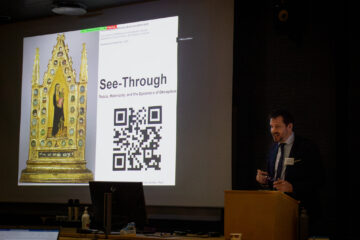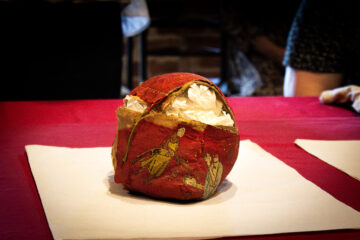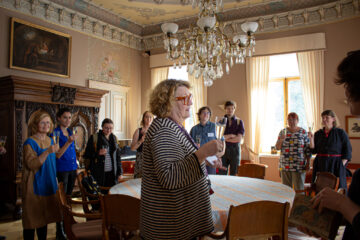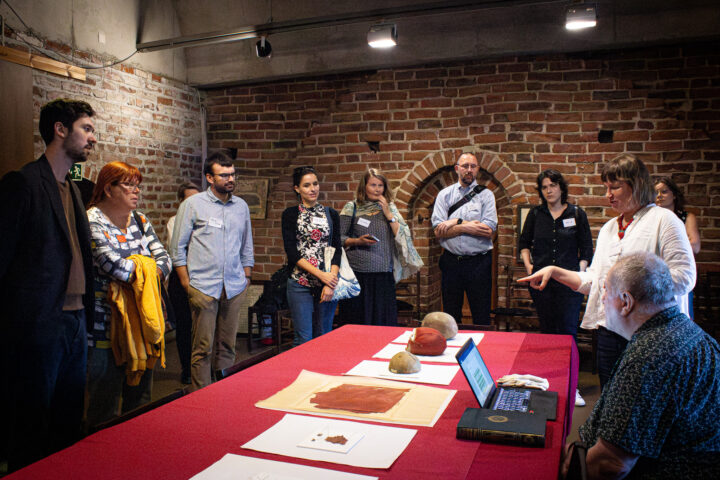Bones, Reliquaries, and Beyond
Two Days of Rethinking Holy Materiality
On 10th and 11th of September we gathered in Turku for a workshop “Rethinking Holy Materiality: Bones and Other ‘Stuff’, With and Without Reliquaries (The Middle Ages and Beyond)”. We had two days of brilliant presentations from various talented researchers, and the workshop was a rewarding event of shared knowledge and learning new things about relics and reliquaries. The workshop was organized by Docent Marika Räsänen and Professor Päivi Salmesvuori in collaboration between TUCEMEMS, Åbo Akademi, University of Turku and The Polin Institute.
On the first day, Marika Räsänen and Päivi Salmesvuori welcomed the workshop participants. In attendance was a happy mix of speakers of the workshop as well as students, and there was a palpable buzz of curiosity in the air.
The first session of presentations was held in the Arcanum building at the University of Turku. The presentations were interesting and easy to follow even for a person not that familiar with medieval relics and reliquaries, and the variety of the topics impressed me greatly – especially when they seemed to weave in together with each other and complemented the information presented in the earlier presentations.

The keynote, “See-through. Relics, Materiality, and the Dynamics of Deception”, by Professor Vincent Debiais was held in the afternoon in Arken, Åbo Akademi. This fascinating talk went deeper into the tangible and intangible elements of reliquaries, the visible and invisible. While the change from one building to another brought certain logistical challenges, a walk in the fresh, sunny air was welcome after sitting down for multiple hours.

In the evening the speakers gathered in the Turku Cathedral to learn about local relics. The relics were a fascinating glimpse into the religious aspect of medieval Turku. The unique items on display were explained thoroughly in a fascinating way, and guests were free to make observations, which led to interesting discussions around the topic. While the climb to the relics was steep, bringing perhaps in mind the pilgrimages of old, the relics were definitely worth the copious number of stairs. That night I went to sleep with my head whirring with new information and ideas, already preparing for day two.
The second day went by with two sets of presentations in Arcanum, with a coffee break (which included some exercise up and down the stairs by us assistants to get everything ready on time). Later we had lunch in restaurant Grädda. The final group of presentations was held after lunch at the Theologicum building in Åbo Akademi’s premises. After a final discussion, the speakers and students gathered at the beautiful Round Room for some bubbles, with a particularly memorable event of a bottle cork flying through the air (luckily not hitting anything or anyone).

Assisting in this workshop was a new experience, and between listening to the presentations and having the opportunity to talk to some of the speakers, I learned a lot about the topics central to the workshop. While my experience is with classical studies, the medieval period has now successfully piqued my interest and perhaps this is a sign to move forward in time from classical antiquity towards later time periods. Being a part of helping with the workshop was also fun, from navigating the participants to the correct rooms to coffee preparation and interesting discussions, and a good, action-filled start to my job as a research assistant at TUCEMEMS.
We thank all the workshop participants for these memorable two days!
**
Reetta Meriläinen is the autumn 2025 research assistant at TUCEMEMS. She is a classical philology major student and is writing her master’s thesis about silent reading in ancient Rome.
All the pictures by Sara Karuneva
